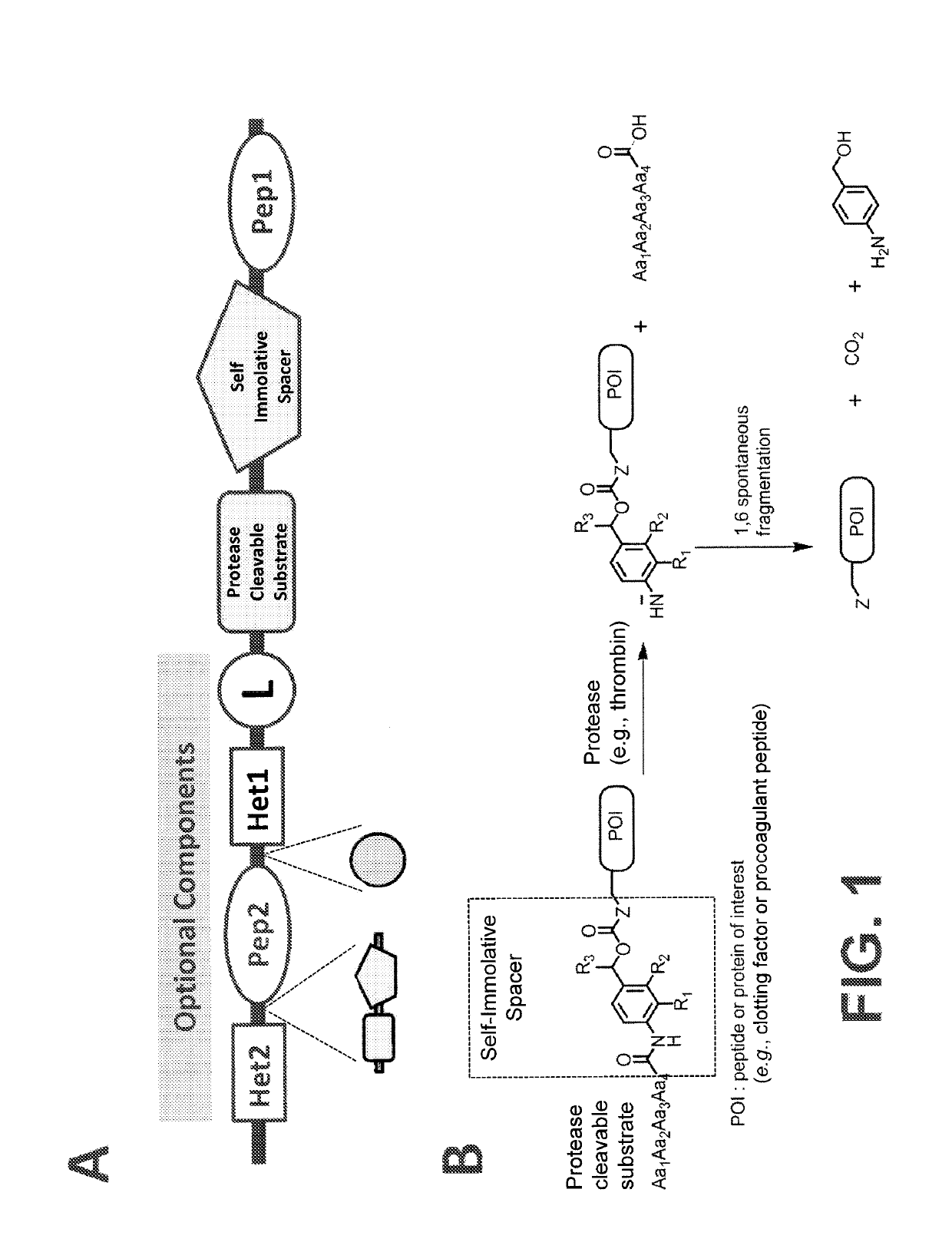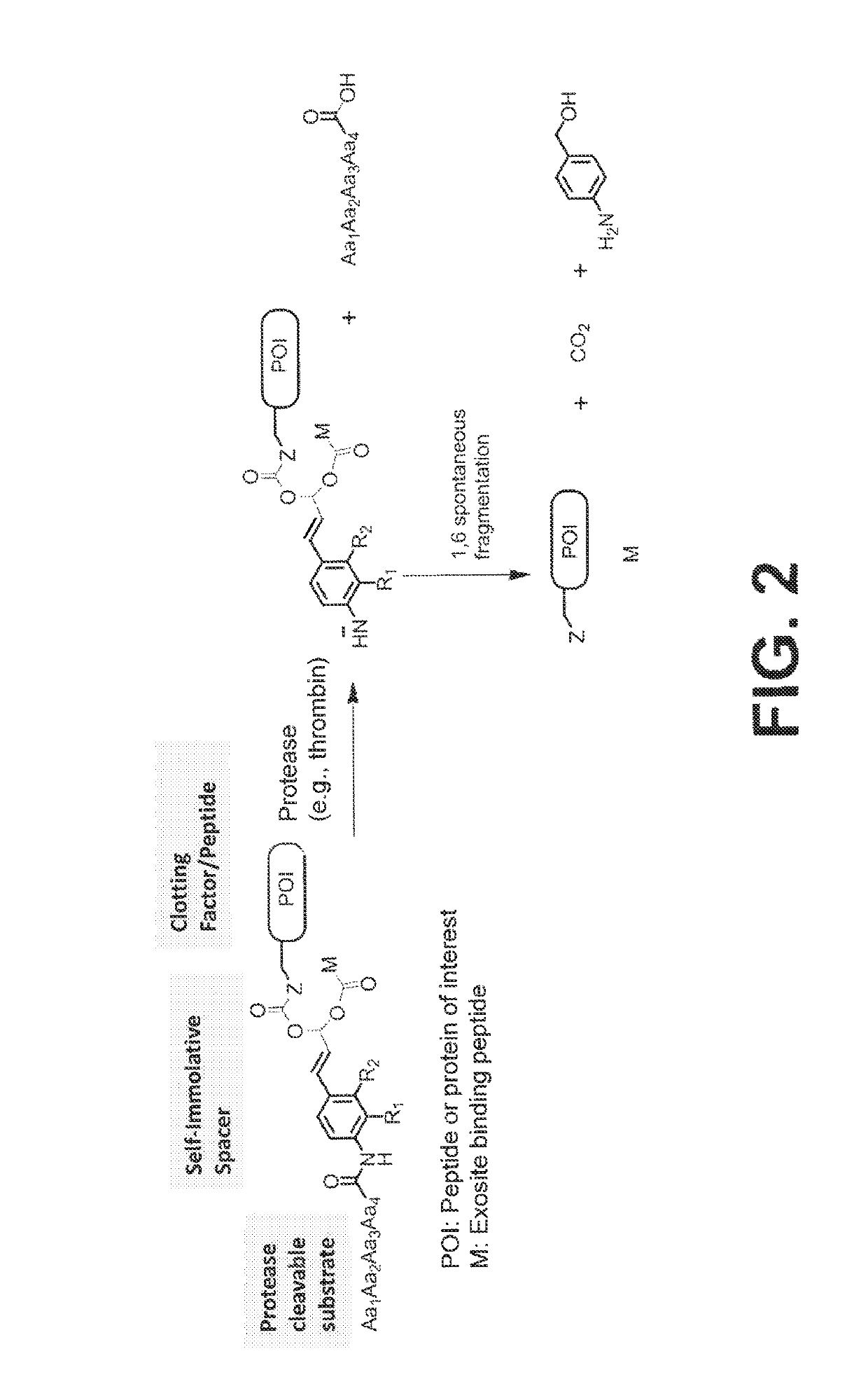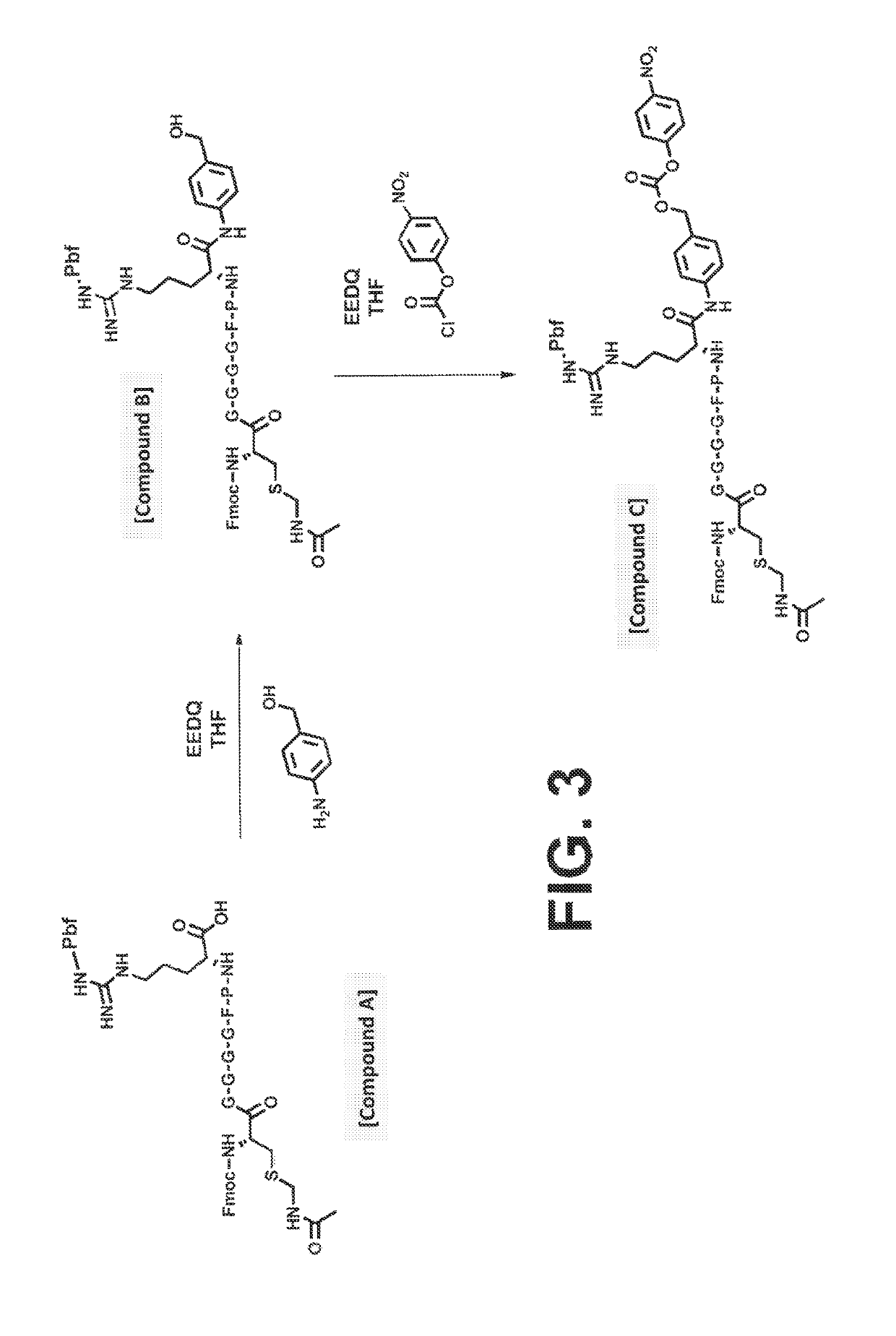Procoagulant compounds
a technology of procoagulant and compound, applied in the field of procoagulant compounds, can solve the problems of inconvenient and painful frequent administration, reduced in vivo and in vitro blood clotting activity, and inability to clot, and achieve the effect of increasing the efficacy of cleavag
- Summary
- Abstract
- Description
- Claims
- Application Information
AI Technical Summary
Benefits of technology
Problems solved by technology
Method used
Image
Examples
example 1
Thrombin-Activatable Procoagulant Compounds with PABC Self-Immolative Linker
[0416]Seven different peptides, designated Compound 1 to 7, were used in, the experiments disclosed herein (TABLE 1). The sequence Ile-Val-Gly-Gly-Gln-Glu in Compounds 1 to 6 corresponds to the six N-terminal amino acid residues of the heavy chain of the FXa clotting, factor. These compounds reproduce the coupling of a thrombin cleavable substrate and a self-immolative spacer to the N-terminus of a clotting factor or a fragment thereof, in this specific example, FX. Compound 7 corresponds to a synthetic procoagulant peptide fused to PABC and to a thrombin-cleavable substrate, and further including a linker and a scaffolding amino acid heterologous moiety (Cys) for attachment of half-life extending moieties such as PEG.
[0417]
TABLE 1CompoundStructure12(D-Phe)-Pip-Arg-Ile-Val-Gly-Gly-Gln-Glu-NH23Ala-Leu-Arg-Pro-Arg- Ile-Val-Gly-Gly-Gln-Glu-NH2456Ala-Leu-Val-Pro-Arg-Ile-Val-Gly-Gly-Gln-Glu-NH27Leu-Ala-Ser-Tyr-Cy...
example 2
Thrombin-Activatable FX with PABC Self-Immolative Linker
[0437]Peptide synthesis method equivalents to those described above, standard recombinant protein production methods, and standard chemical conjugation techniques are used to generate the procoagulant compound described in this example.
[0438]Factor X consists of two polypeptide chains linked by a disulfide bridge (Cys172 Cys342): the 139 amino acid light chain in composed of the Gla domain and the two EGFs; the 306 amino acid heavy chain is composed of the activation peptide joined to the catalytic domain. The activation of factor X requires proteolytic cleavage between the activation peptide and the catalytic domain. The tensase complex and the FVIIa-TF complex perform this cleavage between the Arg234 and Ile235 residues (FIG. 10). As in ail serine proteases, the N-terminal residues of the catalytic chain of activated factor X are Involved in the enzymatic activity. The generated N-terminal Ile235 in particular plays a fundame...
example 3
Thrombin-Activatable FVII with PABC Self-Immolative Linker
[0441]Peptide synthesis method equivalent to those described above, standard recombinant protein production methods, and standard chemical conjugation techniques are used to generate the procoagulant compounds described in this example.
[0442]The present disclosure provides thrombin-activatable FVII (TA-FVII) analogs comprising a synthetic thrombin substrate and a self-immolative spacer (e.g., PABC) linked to FVIIa (FIG. 13). After proteolytic cleavage of the thrombin substrate (D-PhePipArg) and 1,6 spontaneous fragmentation, the natural sequence of FVIIa is released (FIG. 10). The TA-FVII is generated semi-synthetically using native chemical ligation, chemistry. This process involves the reaction of a recombinantly produced FVII fragment containing an N terminal cysteine residue 159 on the catalytic domain (CysFVII) with a synthetically produced thioester peptide to generate a native amide bond at the linkage site To generate...
PUM
 Login to View More
Login to View More Abstract
Description
Claims
Application Information
 Login to View More
Login to View More - R&D
- Intellectual Property
- Life Sciences
- Materials
- Tech Scout
- Unparalleled Data Quality
- Higher Quality Content
- 60% Fewer Hallucinations
Browse by: Latest US Patents, China's latest patents, Technical Efficacy Thesaurus, Application Domain, Technology Topic, Popular Technical Reports.
© 2025 PatSnap. All rights reserved.Legal|Privacy policy|Modern Slavery Act Transparency Statement|Sitemap|About US| Contact US: help@patsnap.com



